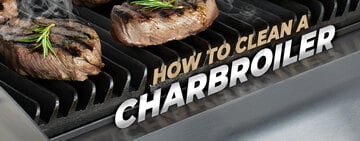
Restaurant Equipment Maintenance
Last updated on 8/5/2024As a restaurant owner, creating a preventative maintenance schedule for your equipment is the best way to make sure that important tasks are performed regularly. Some maintenance tasks are quick and simple, like daily cleaning of equipment. Others are more involved and only need to be performed at the end of the week or even after a couple of months. No matter the task, it's important to stay up to date with your schedule to keep your equipment running smoothly. We've created a calendar checklist to help you prioritize daily, weekly, and quarterly preventative maintenance.
Refrigerator Maintenance

Regular maintenance helps to prolong the lifespan of your refrigeration units. By addressing issues promptly and keeping your equipment in optimal condition, you can avoid costly repairs or premature replacements. Scheduled maintenance allows for the early detection of potential issues before they escalate into costly breakdowns. By identifying and troubleshooting minor problems during routine inspections, you can avoid unexpected downtime and disruptions to your operations.
Daily Maintenance Tasks
- Check the temperature: Monitor and record the temperature of each refrigeration unit daily to ensure it is operating within the recommended range.
- Check door seals: Inspect the door seals for any signs of wear or damage and replace them if necessary to prevent air leaks.
- Clean interior surfaces: Wipe down the interior surfaces of the refrigeration units with a mild detergent to remove spills and food debris.
Weekly Maintenance Tasks
- Check drainage system: Inspect the drainage system for any clogs or blockages and clear them to prevent water leaks.
- Inspect gaskets: Check the gaskets for any tears or gaps and replace them if needed to maintain a proper seal.
- Test defrost cycle: Ensure that the defrost cycle is functioning properly by manually triggering it and checking for any issues.
Quarterly Maintenance Tasks
- Clean the condenser coils: Use a soft brush or vacuum to remove dust and debris from the condenser coils to maintain optimal heat transfer.
- Clean the evaporator coils: Use a coil brush to gently clean the evaporator coils to prevent ice buildup and ensure efficient cooling.
- Clean the condensate drain line: Flush the condensate drain line with a mixture of water and bleach to prevent mold and algae growth.
- Check refrigerant levels: Have a professional technician check the refrigerant levels and top off if necessary to maintain optimal performance.
- Inspect fan motors: Check the fan motors for any signs of wear or unusual noise and lubricate them if needed.
- Verify temperature calibration: Use a thermometer to verify the accuracy of the temperature settings and recalibrate if necessary to ensure food safety.
Flat-Top Griddle and Charbroiler Maintenance

Cleaning your flat-top griddle and charbroiler on a daily basis not only keeps grease buildup from getting out of control but also ensures that your foods taste great. Flavor transfer from stale grease is a quick way to ruin your dishes. It's also a fire hazard that can be easily prevented with daily maintenance. As always, follow the manufacturer guidelines in your owner's manual before performing griddle maintenance.
Daily Maintenance Tasks
- Cleaning: After each use, thoroughly clean the flat-top or charbroiler to remove any food debris, grease, and carbon buildup. Use a grill brick or scraper to remove tough residue.
- Empty grease trays: Empty and clean the grease trays daily to prevent grease buildup, which can lead to flare-ups and potential fire hazards.
- Check for signs of wear: Inspect the equipment for any signs of wear and tear, such as loose parts, damaged knobs, or malfunctioning burners.
Weekly Maintenance Tasks
- Deep cleaning: Perform a deep cleaning of the flat-top or charbroiler once a week. Remove any removable parts and clean them thoroughly. Use a degreaser to clean the cooking surface and grates.
- Inspect gas lines: Check the gas lines for any leaks or damage. Ensure that the gas flow is consistent and the ignition system is working properly.
- Calibrate thermostats: Calibrate the thermostats on the equipment to ensure accurate temperature control.
Quarterly Maintenance Tasks
- Inspect and replace parts: Inspect all parts of the flat-top or charbroiler for wear and tear. Replace any worn-out components, such as burners, knobs, or thermostats.
- Deep clean ventilation system: Clean the hood system thoroughly to prevent grease buildup and maintain proper airflow.
- Schedule professional maintenance: Consider scheduling a professional service technician to inspect and service the equipment quarterly to address any potential issues and ensure optimal performance.
Ice Machine Maintenance

Neglecting to clean and sanitize your ice machine regularly can lead to a failed health inspection. It's not uncommon for operators to forget that ice is considered food, and any surface, bin, or scoop that touches ice should be treated as a food-contact surface. Before following our tips for cleaning, make sure you are using approved chemicals:
Daily Maintenance Tasks
- Clean the ice bin: Remove any ice buildup or debris from the ice bin to prevent contamination and ensure the quality of the ice produced.
- Sanitize ice scoops: Regularly clean and sanitize ice scoops to prevent bacterial growth and maintain hygiene standards.
- Check water levels: Ensure that the water level in the machine is sufficient for proper ice production. Low water levels can lead to strain on the machine and affect ice quality.
- Clean the condenser coils: Dust and debris can accumulate on the condenser coils, reducing the efficiency of the ice machine. Regularly cleaning the coils helps maintain optimal performance.
- Inspect water filters: Check and replace water filters as needed to prevent mineral buildup and ensure clean and clear ice production.
- Deep cleaning: Perform a thorough deep cleaning of the entire ice machine and bin, including the interior components, to remove any scale, slime, or mineral buildup that can impact performance.
- Inspect seals and gaskets: Check the seals and gaskets for wear and tear, and replace them if necessary to prevent leaks and maintain proper insulation.
- Professional inspection: Schedule a professional inspection of the ice machine to identify any potential issues and address them before they escalate into major problems.
- Clean the fryer basket: Remove and clean the fryer basket daily to prevent the buildup of food particles and grease, which can affect the quality of the fried food and potentially lead to a fire hazard.
- Filter and skim oil: Regularly skim the oil to remove any food debris or particles that can affect the taste of the fried food. Filtering the oil daily helps maintain the oil quality and extends its lifespan.
- Wipe down the exterior: Wipe down the exterior of the fryer daily to remove any grease or spills, preventing the buildup of grime and ensuring a clean and safe cooking environment.
- Boil out the fryer: Boiling out the fryer weekly helps remove built-up grease, carbon deposits, and other residues that can affect the fryer's performance and the quality of the fried food.
- Clean the fryer tank: Drain and clean the fryer tank weekly to remove any sediment or carbon buildup that can affect the fryer's heating efficiency and the quality of the fried food.
- Inspect the fryer components: Check the fryer components such as the heating elements, thermostat, and controls weekly to ensure they are functioning properly and make any necessary adjustments or repairs.
- Replacing fryer oil: Replace the fryer oil quarterly to maintain the quality of the fried food and prevent the buildup of harmful compounds that can affect the taste and safety of the food.
- Inspect gas connections: Inspect the gas connections quarterly to ensure they are secure and leak-free, preventing potential gas leaks or safety hazards.
- Calibrate thermostats: Calibrate the fryer thermostats quarterly to ensure accurate temperature control and consistent frying results.
- Clean the interior: Wipe down the interior surfaces of the walk-in cooler, including shelves, walls, and floors, with a mild detergent solution to remove any spills, debris, or mold growth.
- Check temperature and humidity levels: Monitor and record the temperature and humidity levels inside the cooler multiple times a day to ensure they are within the recommended range for food safety.
- Inspect door seals: Check the door seals for any signs of wear, tears, or gaps that could compromise the seal and lead to energy loss. Replace any damaged seals promptly.
- Clean condenser coils: Remove dirt, dust, and debris from the condenser coils using a soft brush or vacuum to maintain optimal heat transfer efficiency.
- Test door closings: Test the door closings to ensure they seal properly without any gaps or air leaks. Adjust or replace hinges and latches as needed.
- Check refrigeration components: Inspect the refrigeration system components, such as the compressor, evaporator coils, and fans, for any signs of wear, corrosion, or leaks. Address any issues promptly to prevent system failures.
- Calibrate thermostats: Calibrate the thermostats and temperature controls to ensure accurate temperature regulation and prevent fluctuations that could impact food safety.
- Lubricate moving parts: Apply lubricant to moving parts, such as hinges, fan motors, and door hinges, to reduce friction and prevent premature wear and tear.
- Clean the interior and exterior: Clean the interior and exterior surfaces of the combi oven to remove food debris, grease, and other residues.
- Inspect gasket: Check the door gasket for any signs of wear or damage, and ensure it seals properly to maintain temperature consistency.
- Clean the control panel: Wipe down the control panel and buttons to prevent dirt buildup and ensure accurate operation.
- Check steam generator: Inspect the steam generator and water reservoir levels to ensure they are filled appropriately for operation.
- Inspect the drain: Clear the drain and ensure it is free from blockages to prevent water buildup and maintain proper drainage.
- Clean racks and filters: Remove and clean the removable parts such as racks, trays, and filters to prevent the buildup of food residues and improve cooking performance.
- Check the interior: Inspect the cooking chamber for any signs of corrosion, rust, or damage, and address any issues promptly to prevent further damage.
- Inspect the ventilation system: Check the ventilation system for any blockages or obstructions that could affect airflow and ventilation efficiency.
- Calibrate the thermostat and humidity: Calibrate the temperature and humidity settings to ensure accurate cooking results and prevent overheating or undercooking.
- Perform a deep clean: Deep clean the interior of the combi oven, including descaling the steam generator and water reservoir to remove mineral deposits and prevent clogs.
- Inspect electrical parts: Inspect the electrical components and connections for signs of wear or damage, and address any issues to prevent electrical malfunctions.
- Apply lubrication: Lubricate hinges, door mechanisms, and other moving parts to ensure smooth operation and prevent premature wear and tear.
- Run a performance test: Conduct a performance test to check the overall functionality of the combi oven and identify any potential issues that may require professional maintenance.
- Clean the interior: Clean the interior and racks of the convection oven to remove any food residue and grease buildup.
- Clean the Drip Tray: Remove and clean the drip tray to prevent the accumulation of debris and ensure proper airflow within the oven.
- Clean the door gasket: Wipe down the door gasket with an approved cleaner to maintain a tight seal and prevent heat loss.
- Check the fan blades: Inspect and clean the fan blades to ensure they are free of dirt and debris that could affect the oven's performance.
- Calibrate the thermostat: Check the thermostat calibration and adjust if necessary to maintain accurate temperature settings.
- Wipe down the exterior: Clean the exterior of the convection oven to remove any grease, fingerprints, or other buildup.
- Check door hinges: Inspect the door hinges and latches for any signs of wear or damage and lubricate them as needed.
- Inspect electrical connections: Check the electrical connections to ensure they are secure and free of corrosion.
- Schedule an inspection: Have a professional technician perform a thorough inspection and tune-up to address any potential issues and keep the convection oven running efficiently.
- Inspect spray arms: Regularly check and clean the spray arms to remove any debris or buildup that could obstruct water flow and affect cleaning efficiency.
- Clean filters: Clean and inspect the dishwasher filters to prevent clogs and maintain optimal performance.
- Check detergent and rinse aid levels: Verify that there is an adequate supply of detergent and rinse aid to achieve sparkling clean dishes.
- Wipe down interior and exterior: Wipe down the interior and exterior of the dishwasher to remove any food residue, grease, or grime that could impact hygiene and machine longevity.
- Run cleaning cycle: Run a cleaning cycle with a commercial dishwasher cleaner to remove any buildup of grease, limescale, or food particles within the machine.
- Inspect door seals: Check the door seals for any signs of wear or damage that could lead to leaks and affect the dishwasher's performance.
- Clean wash arms: Remove and clean the wash arms to ensure proper water distribution and avoid blockages that can impact cleaning results.
- Check water temperature: Verify that the water temperature in the dishwasher is reaching the necessary level for effective cleaning.
- Deep clean interior: Perform a deep cleaning of the interior of the dishwasher, including scrubbing hard-to-reach areas and descaling the machine to remove mineral deposits.
- Inspect hoses and connections: Inspect hoses and connections for any signs of wear, leaks, or blockages that could lead to operational issues.
- Calibrate rinse aid dispenser: Calibrate the rinse aid dispenser to ensure the correct amount is being dispensed for optimal drying results.
- Check for leaks: Conduct a thorough inspection for any leaks in the dishwasher or its surrounding area to prevent water damage and maintain a safe working environment.
- Wash bowl and removable parts: Clean the bowl, attachments, and splash guard thoroughly with warm, soapy water, and dry them completely before use.
- Clean the exterior: Wipe down the exterior of the stand mixer with a clean, damp cloth to remove any food debris or spills.
- Check power cord: Inspect the power cord and plug for any signs of wear or damage.
- Check for loose parts: Inspect the stand mixer for any loose screws or parts that may need tightening.
- Apply lubrication: Lubricate any moving parts or gears as recommended by the manufacturer.
- Perform a test run: Run the stand mixer for a few minutes without any ingredients to ensure smooth and quiet operation.
- Perform a deep clean: Remove the planetary components and attachments for a deep cleaning to remove any buildup of food particles or grease.
- Inspect electrical parts: Check the electrical components for any signs of wear or damage and have them serviced if necessary.
- Check the manual: Review the owner's manual for any specific maintenance tasks recommended by the manufacturer.
- Sanitize the nozzle and dispensing area: Clean the nozzle and dispensing area with a sanitizing solution to prevent bacteria growth and ensure the quality of the beverages.
- Check carbonation levels: Verify that the carbonation levels are consistent by testing the soda dispenser throughout the day to maintain the desired taste and quality of the drinks.
- Wipe down exterior surfaces: Regularly wipe down the exterior surfaces of the soda dispenser to remove any spills, dust, or debris that can accumulate and affect the overall cleanliness of the equipment.
- Deep clean the nozzle and dispensing area: Disassemble the nozzle and dispensing area for thorough cleaning to remove any buildup or residue that may affect the flavor and appearance of the beverages.
- Inspect CO2 tanks: Check the CO2 tanks for any leaks or signs of damage to ensure proper carbonation levels and prevent any potential safety hazards.
- Clean the drip trays and drain lines: Remove and clean the drip trays and drain lines to prevent clogs and maintain proper drainage to avoid spills and contamination.
- Replace o-rings and seals: Inspect and replace any worn or damaged o-rings and seals to prevent leaks and maintain the integrity of the soda dispenser system.
- Calibrate the dispensing system: Calibrate the dispensing system to ensure accurate portion control and consistent beverage quality for customer satisfaction.
- Inspect water filtration system: Check and replace the water filtration system as needed to maintain the quality of the water used in the soda dispenser, which can affect the taste of the beverages.
Weekly Maintenance Tasks
Quarterly Maintenance Tasks
Fryer Maintenance
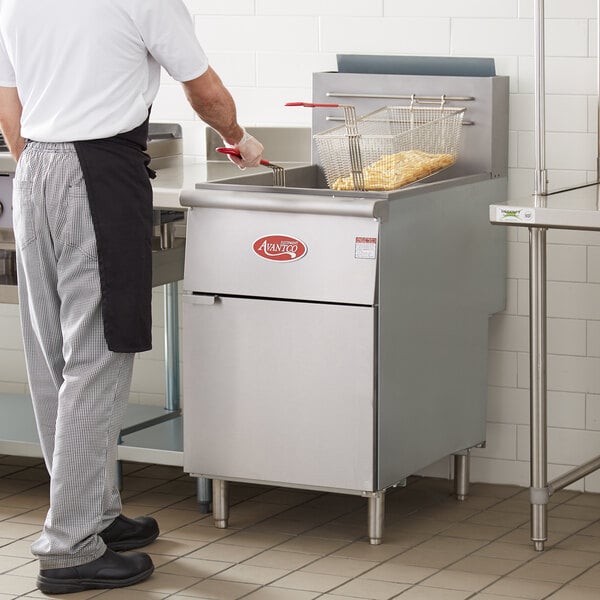
Your deep fryer is a perfect example of how regular equipment maintenance can actually improve your product. It's essential to develop an oil filtration and replacement schedule so that your fried foods taste fresh and crispy with no flavor transfer. Our guidelines are a general recommendation and could vary depending on how often you use your fryer and the amount of product you sell each day:
Daily Maintenance Tasks
Weekly Maintenance Tasks
Quarterly Maintenance Tasks
Walk-In Maintenance
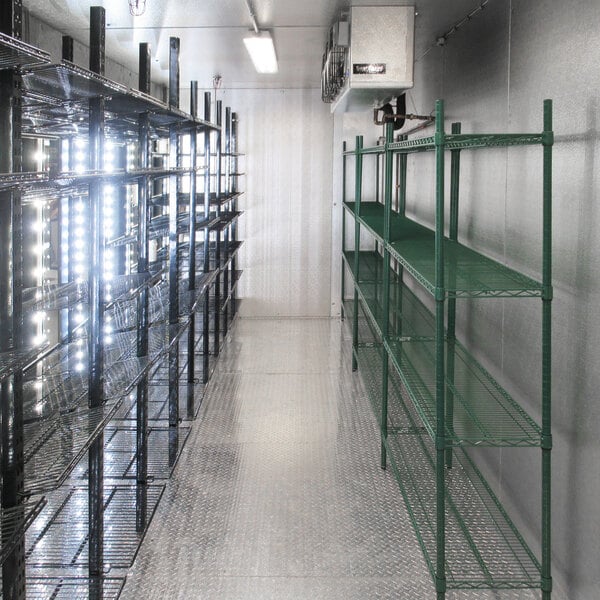
Turning off the interior lights of your walk-in coolers and freezers is one of the simplest things you can do to save energy and keep your unit from overworking the compressor. When the lights are left on overnight, they heat up the interior and the unit must compensate for the rising temperature. It's also important not to overfill your walk-in and always keep the aisles clear. Consult your equipment manual for specific maintenance protocols but use the following steps as a guideline:
Daily Maintenance Tasks
Weekly Maintenance Tasks
Quarterly Maintenance Tasks
Combi Oven Maintenance
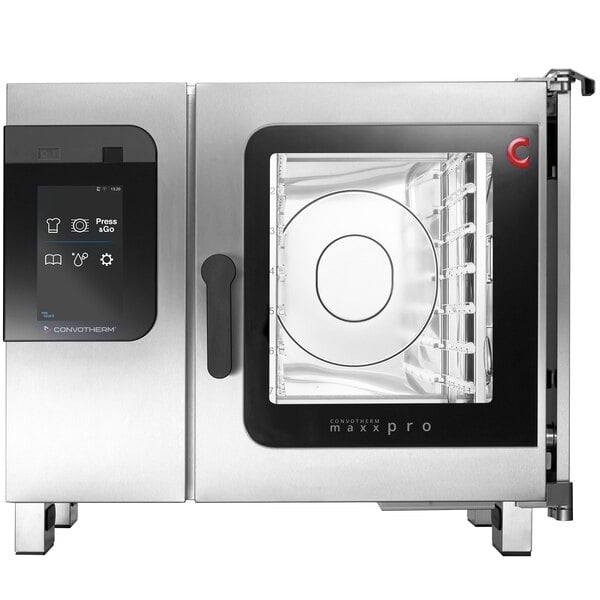
Because your combi oven relies on steam to cook foods, you'll need to perform regular deliming maintenance to prevent scale buildup. Thankfully, many combi ovens include an automatic cleaning feature that can be performed with the touch of a button. When your combi program alerts you that it's time for a cleaning cycle, you should begin one as soon as possible. Your equipment manual will contain more detailed information on the types of cleaning cycles your combi oven requires.
Daily Maintenance Tasks
Weekly Maintenance Tasks
Quarterly Maintenance Tasks
Convection Oven Maintenance
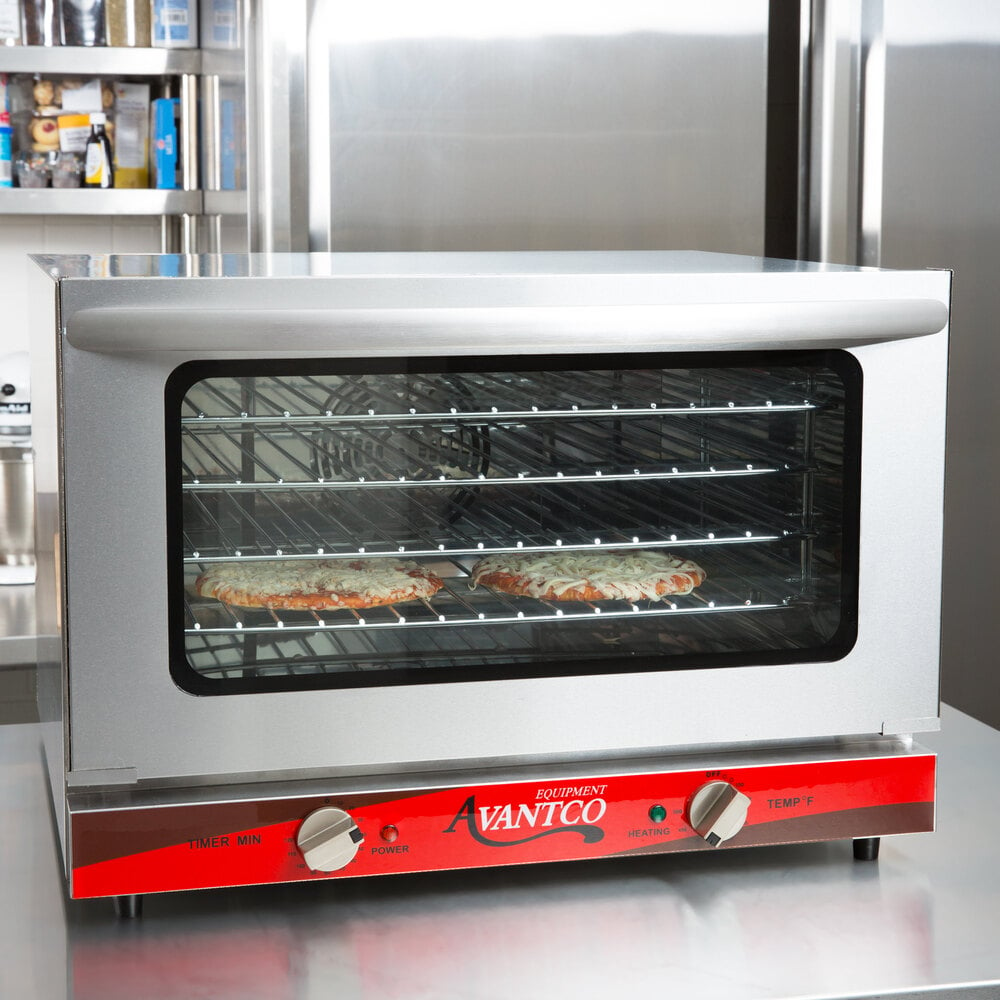
Convection ovens require little in the way of maintenance but benefit greatly from a regular cleaning schedule. Removing grease on a daily basis prevents buildup from becoming a problem. Make sure to use approved cleaners for the interior and exterior of the oven and follow your manual's cleaning instructions.
Daily Maintenance Tasks
Weekly Maintenance Tasks
Quarterly Maintenance Tasks
Dishwasher Maintenance
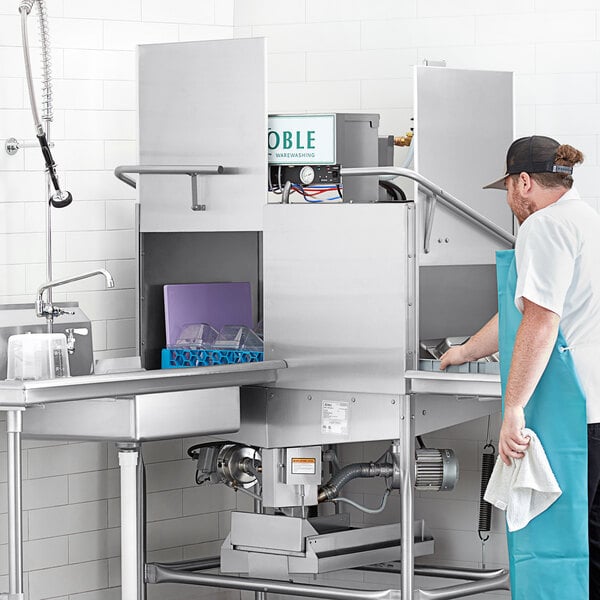
Rinsing food scraps from soiled dishes and loading your dishwasher correctly will help to keep the interior of your unit clean and prevent greasy residue from clinging to your clean dishes. Daily cleaning will be much easier and you won't need to empty the scrap basket or filter as often. Another way to prevent bacteria growth inside your dishmachine is to leave it open to air dry every night.
Daily Maintenance Tasks
Weekly Maintenance Tasks
Quarterly Maintenance Tasks
Stand Mixer Maintenance

To avoid possible injuries, always make sure to unplug your mixer before daily cleaning. Pay special attention to the areas where batter will often splatter and harden, like the attachment hub and gear shaft. Hand dry or air dry any removable parts before reassembling the mixer.
Daily Maintenance Tasks
Weekly Maintenance Tasks
Quarterly Maintenance Tasks
Soda Dispenser Maintenance

Daily cleaning is essential for your soda and beverage dispensers. Syrup that collects in the nozzles or soda lines can become a breeding ground for mold and bacteria. To encourage daily cleaning, make sure to train your staff to disassemble the machine nozzles. It's also helpful to post step-by-step instructions near your machines.
Daily Maintenance Tasks
Weekly Maintenance Tasks
Quarterly Maintenance Tasks
Use this checklist as a general guide to schedule preventative maintenance, but always follow the guidelines set forth by the manufacturer of your equipment. Consult the user manual that came with your unit for specific cleaning instructions and safety warnings. Also, remember that some maintenance must be performed by a certified technician, especially if it involves electrical components. Attempting to perform technical repairs on your own could void your warranty.


